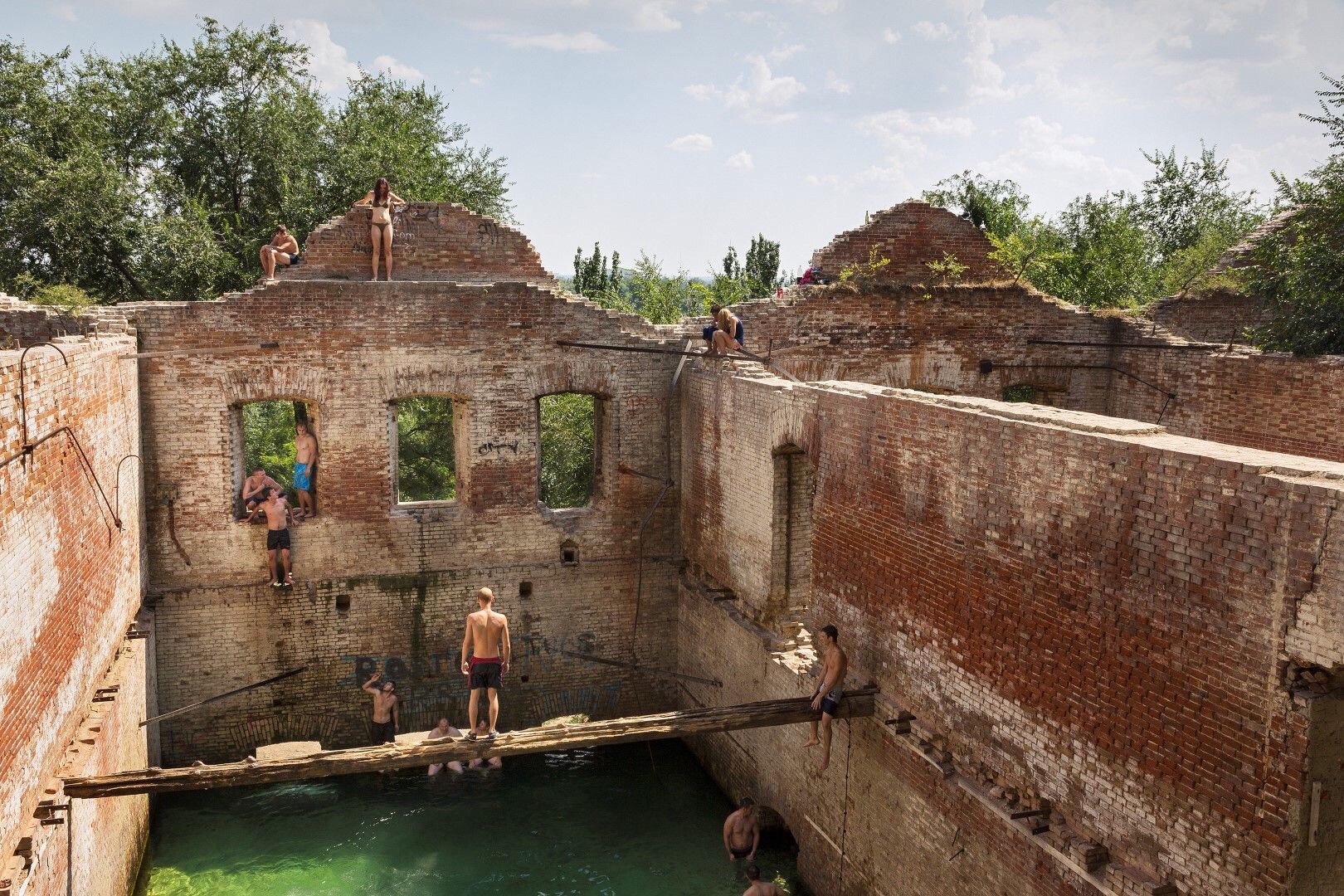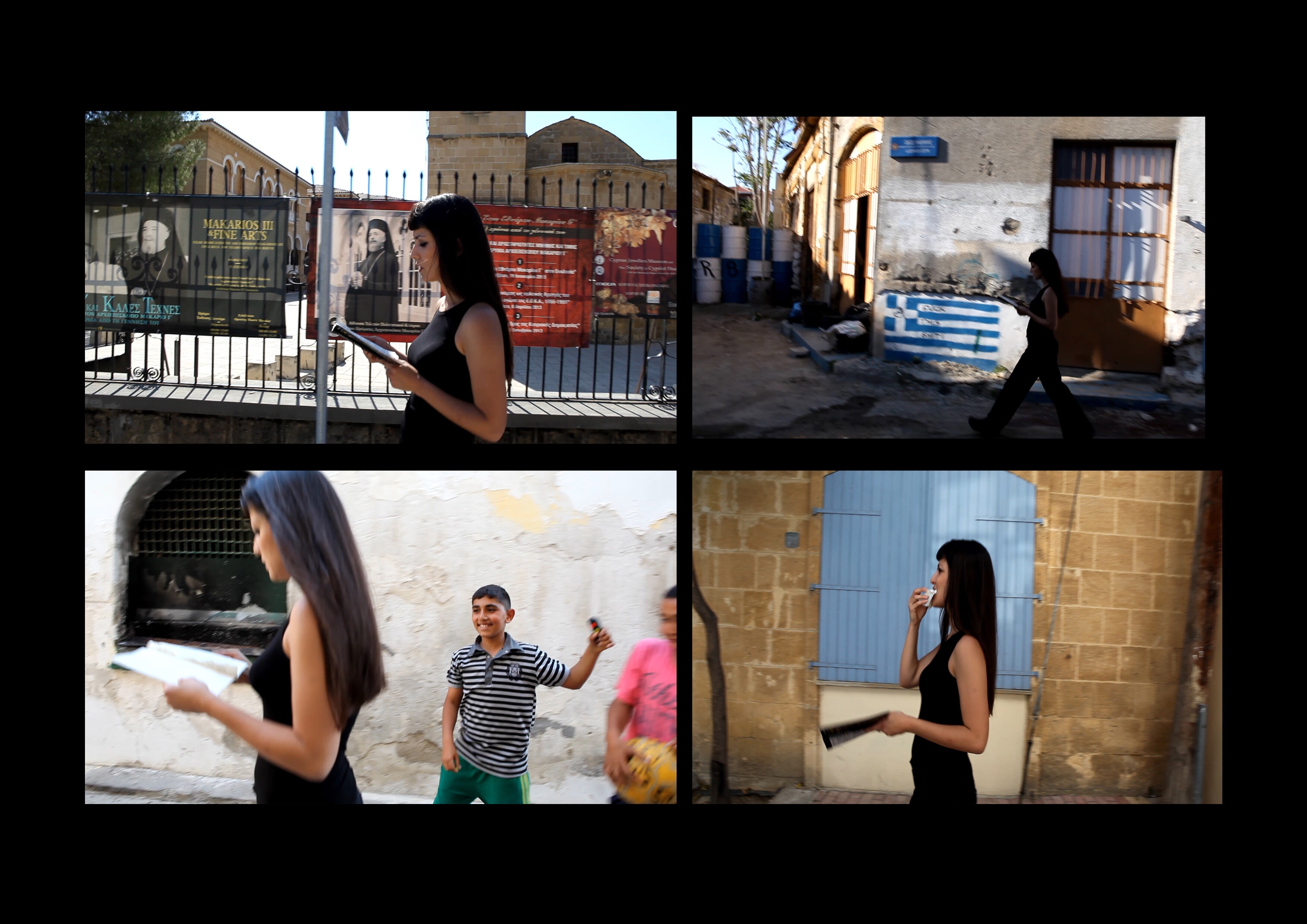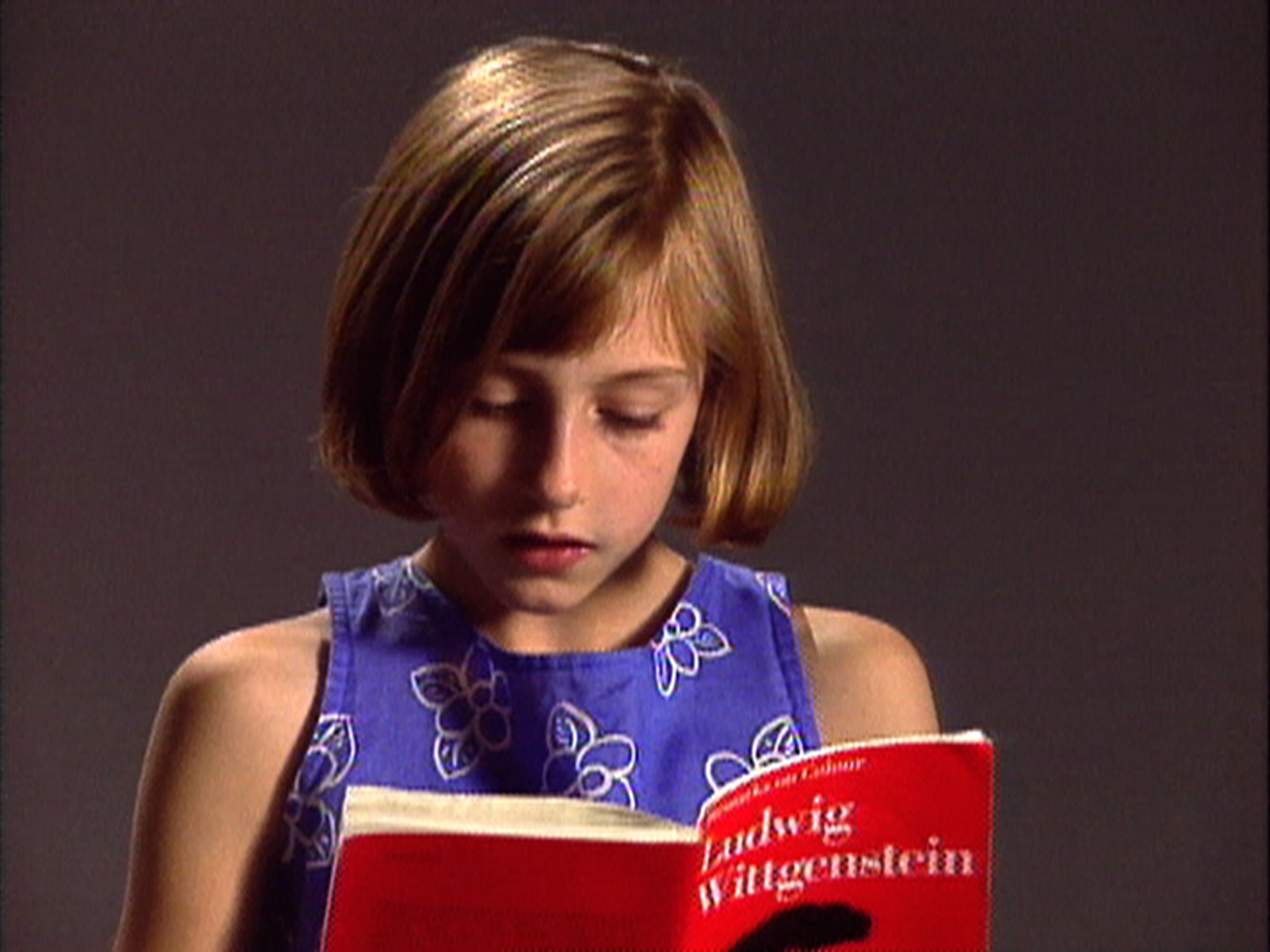To celebrate Athens as the 2018 World Book Capital, acclaimed curator and Director of Annex M, Dr Anna Kafetsi, has organised a trilogy of exhibitions at Megaron, the 1991 concert hall designed by Christopher Alexander. Annex M is the visual art center of the Athens Concert Hall which opened last year to a similar program of video installation around the building and surrounding gardens.
The first exhibition in this series of three exhibition is called The Last Reader. The exhibition explores the limits of readings. and the relationship between text and reader. The title raises the question of just who is this last reader? Is it the temporal ‘last’ or final reader, or is it something more symbolic, the reader who interprets the text ‘correctly’ so that it can be read no more? The authority of the text is questioned in the exhibition, interrogating lines between fiction and non-fiction and the hierarchies of text as a form and also its status as an intellectual pursuit.
Coming up through the garden entrance of Megaron, the audio from the numerous video installations scattered across the site begin to set the serious tone of the exhibition. The eerie noises create an unfamiliar atmosphere around the gardens which are usually pleasant.
A video work by Australian-British artistic duo Sonia Leber and David Chesworth is the first piece to greet me as I wander up the path suddenly realising the novelty of going to see video art outside at 9 o’clock at night. It’s like open air cinema but more work. Leber and Chesworth’s piece titled Zaum Tractor (2013) blares out dramatic music while a group of boys go diving in an abandoned building on one screen and an austere public building is shown on the other. The video tracks various periods of Russian history using archival footage and comes at a time when free-speech and communication are been threatened and taken away in that country.
 Still from Sonia Leber & David Chesworth’s Zaum Tractor, (2013), Video installation 2-channel HD video, 5.1 audio, 26′ Courtesy of the artists.
Still from Sonia Leber & David Chesworth’s Zaum Tractor, (2013), Video installation 2-channel HD video, 5.1 audio, 26′ Courtesy of the artists.
Overlaying the images, the figures articulate word-like sequences which belong to no spoken language but are instead a kind of poetic expression known as Zaum (translated from Russian as beyonsense or transreason) created by futurist poets at the start of the 20th century. Without meaning it is hard to discern the intention of the speakers but what we can say for sure is that they have escaped from some of the restraints that interpretation places on language and those who utilise that language.
A few meters up the hill sits a single channel piece by visionary American video artist Gary Hill. Art Historian Lynne Cooke describes Hill as “a pioneer in his embrace of the then novel medium of video, Hill distinguished himself through a radical approach that both literally and conceptually deconstructed it…No artist of Hill’s generation probed this medium with such invasive scrutiny, and none deployed it with such protean irreverence.”
Hill’s 1983 piece Happenstance (part one of many parts) combines spoken and written words to pull out ambiguities. “This..that…and other things…things…things are going to happen” Hill articulates as shapes transform on the screen, avoiding any static reading. What seems to characterise these pieces is the exposing of language as ineffective, nonspecific and perhaps useless.
In Turkish artist, Didem Erk’s performance video installation, I wish I could not be traced in the archives, (2013), continues this theme of a malleable language develops with a deconstruction of text itself, quite literally. The artist eats the pages of a book of short stories by Gürgenç Korkmazel, a Turkish/Cypriot writer, as she strides through Istanbul reading Sirkiran to the concrete surroundings. Korkmazel once said in an interview: “For me, the nature of poetry itself is anarchist. It’s like you revolt against something, when you are a poet…”. The same could be said about Erk’s performance which revolts against the physical object of the book by destroying it.
 Stills from Didem Erk’s I wish I could not be traced in the archives|”Arsivlerde izim Bulunmasin isterdim” (Sirkiran|Secret Decipherer|Mistiko Spastis) (2013), Performance video installation, double Channel full HD video, color, sound, 20′:3″, 15’37“. Image courtesy of the artist and Zilberman Gallery, Istanbul via Megaron.
Stills from Didem Erk’s I wish I could not be traced in the archives|”Arsivlerde izim Bulunmasin isterdim” (Sirkiran|Secret Decipherer|Mistiko Spastis) (2013), Performance video installation, double Channel full HD video, color, sound, 20′:3″, 15’37“. Image courtesy of the artist and Zilberman Gallery, Istanbul via Megaron.
As we round the corner from Erk’s urgent reading, a child reading Ludwig Wittgenstein’s Remarks on Color appears on a screen about two meters tall. This image is the front piece of the exhibition making it a key work in the exhibition. The second video by Gary Hill goes by the same name as Wittgenstein’s book and concludes the exhibition rather nicely. As the child reads they make mistakes and so introduce this permeability of language by accident but the “semantic changes” create “a new linguistic/artistic field”. Or rather, these linguistic mishaps can actually reveal alternative and equally viable readings of a text, of an artwork leading us to believe that there cannot, in fact, be a ‘last reader’.
 Still from Gary Hill’s Remarks on Color (1994), Single-channel video/sound installation, video projector, two speakers, color, stereo sound, 45′. Image courtesy of artist via Megaron.
Still from Gary Hill’s Remarks on Color (1994), Single-channel video/sound installation, video projector, two speakers, color, stereo sound, 45′. Image courtesy of artist via Megaron.
It is interesting that in an exhibition celebrating Athens as the book capital of the world a number of pieces expose the fragility of literature and language. However this reveals two important points, the power of art to transgress language and the importance to protect and use language carefully during a time when it is frequently exploited.
The Last Reader is open daily at Megaron 19.00 – 24.00 / 10.7 -16 .9 2018
Entrance is free




